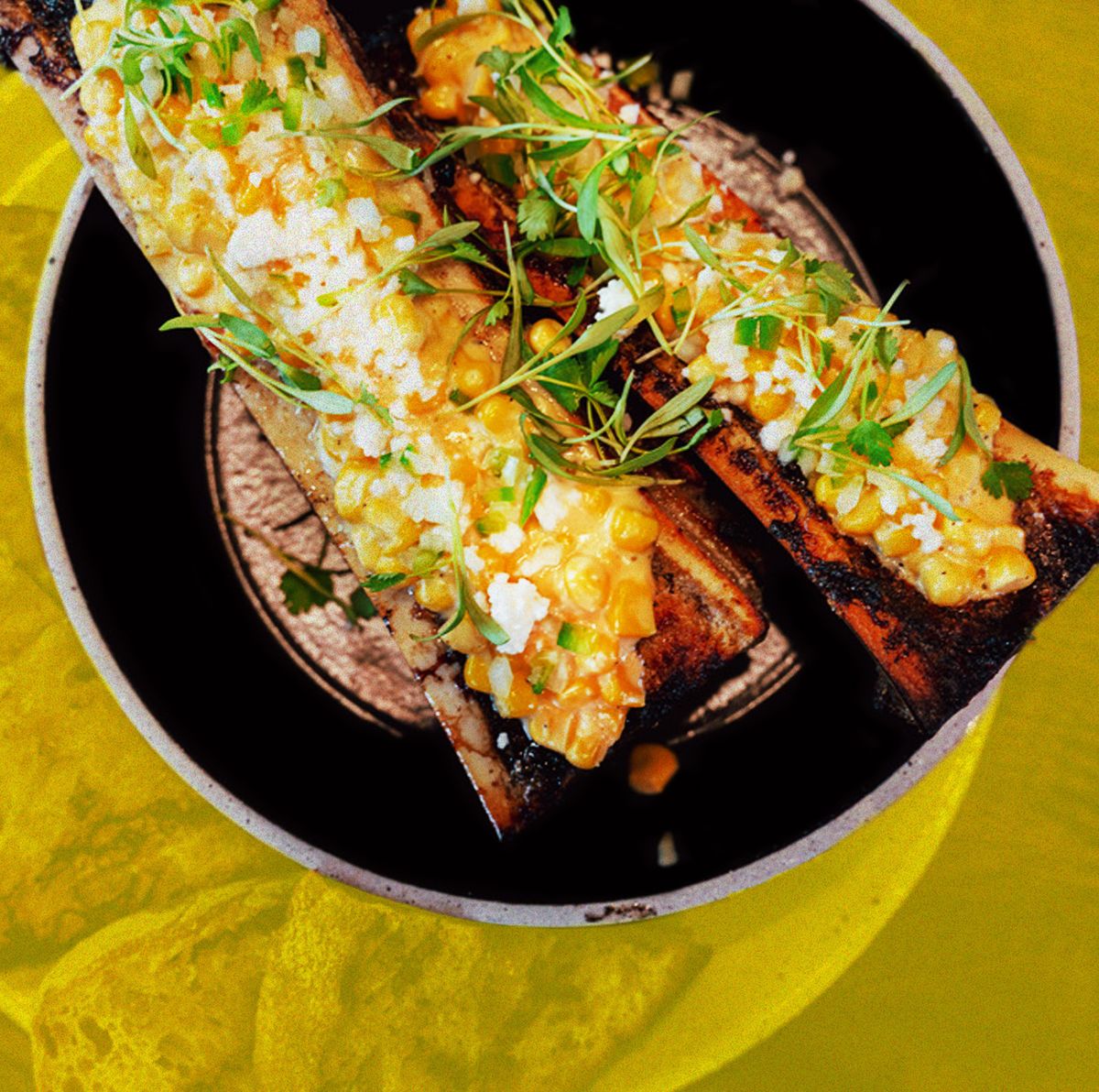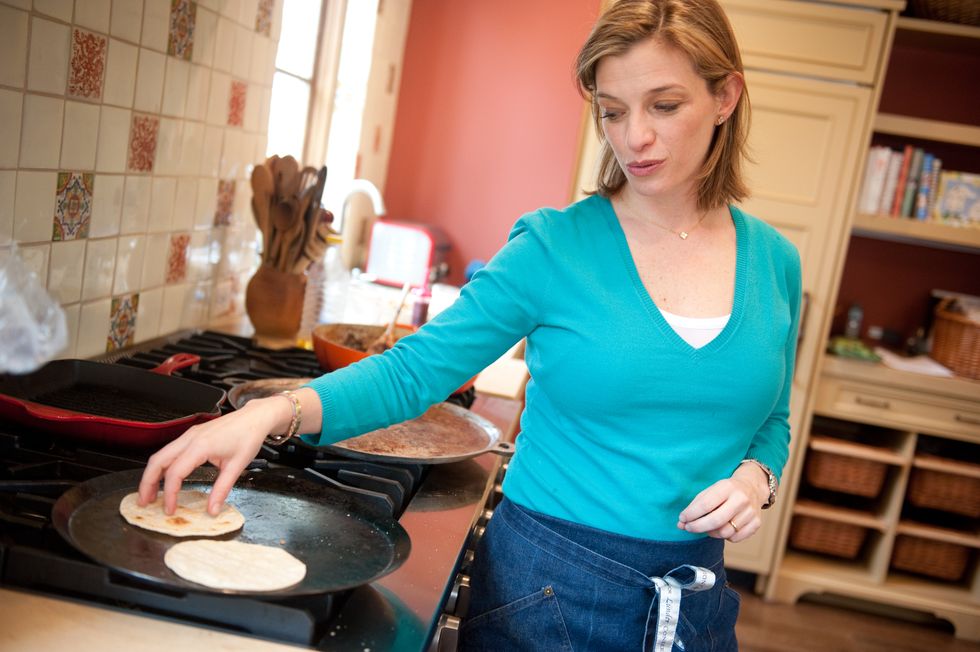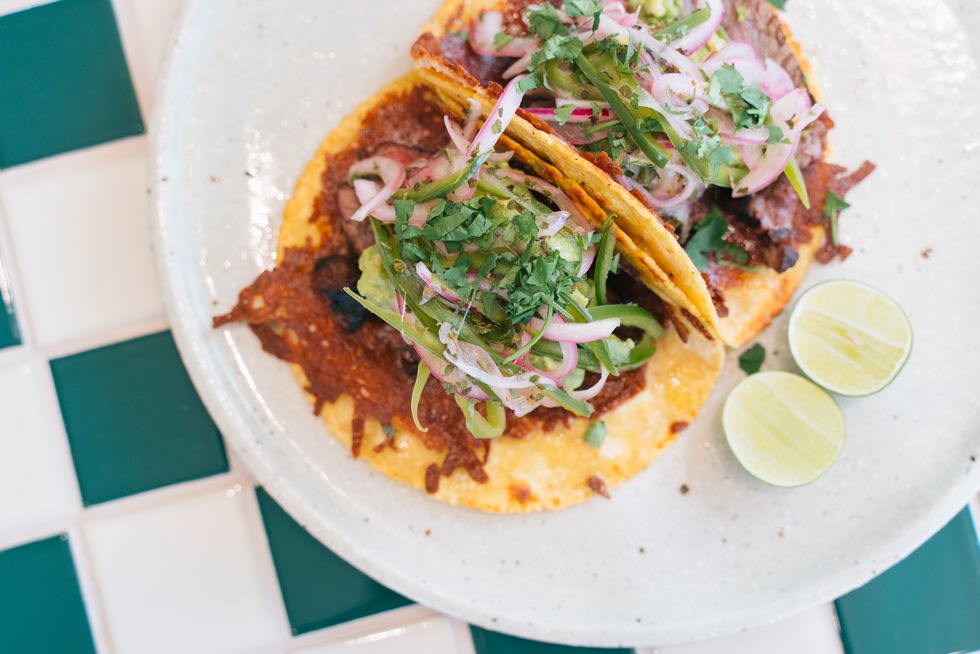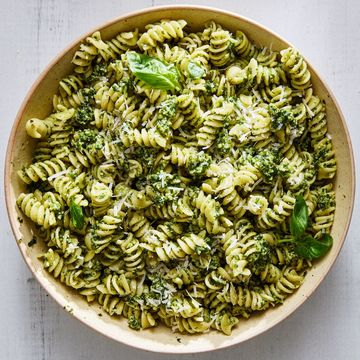Pati Jinich, chef and host of the PBS cooking series Pati’s Mexican Table , has watched her audience’s palate change in front of her eyes. When the first episode of her series aired in 2011, Jinich made sincronizadas, essentially a Mexican ham and cheese sandwich, and several kinds of simple quesadillas.
“I didn’t start Pati’s Mexican Table with menudo tripe soup and super-complicated mole that has 50 ingredients because the audience wasn’t there yet,” Jinich notes. It wasn’t simply a question of the chef tempering her food for U.S. audiences. She also remembers being encouraged to tone down herself. “Producers, networks, the production team, [and] editors were like, ‘No Spanish. Please lose your accent. When you’re speaking about Mexican ingredients, don’t say it with a Spanish accent.’”
On those initial shoots, Jinich recalls being asked to repeat anything that might be unclear to an English-speaking audience in her lyrical Mexico City accent. Proud of her binational identity, Jinich refused to capitulate, and 12 years later, instead of the audience rejecting her, they have embraced her and her authentic food. She’s currently in production on the 12th season of Pati’s Mexican Table.
Thanks to a plethora of coalescing factors, from immigration to education, the days of Tex-Mex falsely representing the totality of Mexican food may be over as professional and amateur cooks alike are heralding endangered ingredients, prying into the histories of Indigenous cuisine, and dissecting culinary cultural appropriation.
“There’s an increasing hunger from the American palate and the international audience to know more,” says Jinich, who also hosts and executive produces the PBS travel series La Frontera. “People would think things were too niche, or erroneously labeled too ethnic, or not for everybody. Now, there’s this hunger, like, let’s go deeper, particularly with Mexican food.”
Jinich credits the evolving food scene as a part of the reason her audience is more open to the hyper-regional dishes in her latest seasons, such as pork skin in three chile sauce from Jalisco or pumpkin-seed and egg enchiladas from the Yucatán. The push to give marginalized Mexican communities a platform to tell their own stories through food — from TV cooking shows to TikTok videos — has given many cooks, no matter how isolated they are from the halls of influence, a microphone.
One of those newly miked local cooks is Cecilia Chairez, who from her small restaurant Mi Zacatecas in Oakland, California, is promoting the food of her home state in Mexico. “Obviously, someone’s recommendation to try your food is the very best publicity,” she says. “Using social media, you have a much greater reach and visibility. You can show people what makes you unique, in my case specifically, food from Zacatecas.”
Chairez’s diners often wander in looking for burritos, which are not exactly native to her region. She keeps them as options in order to entice her clients to expand their Mexican food horizons. “People from other ethnicities come to the restaurant and ask, ‘What’s a gordita?’ I can convince them to try it. When they do, they’re like, ‘Wow. This is delicious.’”
Unlike the typical fried versions found at other California streetside stands, Chairez’s gorditas are freshly stuffed with special fillings, most of which come from childhood recipes. She also makes Zacatecas-style barbacoa accompanied by rich consommé, menudo, and pozole rojo (pork soup with hominy) on the weekends.
“[Food] allows people to see us differently as immigrants,” Chairez says about the diplomatic power of a meal. “We aren’t here to take jobs, be delinquents, or whatever. We have a beautiful story that we want to share, something that we are offering, traditions that, in the end, I think they appreciate.” Chairez says her newfound fans are now inspired to travel to off-the-beaten-path destinations throughout Mexico, returning home with stories of delicious street food that they want to re-create.
For more than a decade, chef Regino Rojas has been ensconced in similar gastronomic missionary work for diners in Dallas. Since he opened Revolver Taco Lounge in 2011, the eatery has been what he calls a “culinary museum” showcasing the dishes of his home state of Michoacán.
In the first few years of operation, diners often walked in off the street expecting melted cheese and mariachi hats. They couldn’t understand why they had to wait for thoughtful preparations of al pastor octopus and pork ribs in chile de arbol sauce that were coming out of Rojas’ kitchen.
“In the beginning, it was horrible because not even Mexicans would give me a chance,” Rojas remembers. “[My approach] was more, ‘Sit down, and let me explain to you how we do things, and then you can judge it.’ [I believe] all Mexican food should come with a little bit of culture so people leave your place with something else more than just food in their stomach.”
Dallas hasn’t historically been a mecca of hyper-regional cuisine. These days, Rojas says attitudes are changing, especially when locals gained a newfound respect for Mexican food during the pandemic. “During the pandemic, when everything went to s--t, the taco was the one that stayed in the streets. Tacos were feeding people, not burgers.”
A few years after opening Revolver, Rojas pushed the boundaries further and opened the Purépecha Room, a chef’s tasting experience highlighting the food of Indigenous culture in Michoacán. Items like the traditional pork corundas (a type of tamale) or a rabbit meatball soup give diners a small taste of this lesser-known slice of Mexican culinary heritage. The response has been overwhelming.
Begrudgingly, Rojas acknowledges that shows like Netflix's Taco Chronicles (on which he was featured) have expanded people’s minds about Mexican cuisine, but he adds that food writers and critics have had a vital part in the eating evolution. “The criteria of the food critics has changed,” he says. “They understand that [Dallas] is a city that’s growing and that the immigrants living there are going to be the ones eventually competing in the culinary scene, so they are supporting people from Vietnam, Thailand, Mexico.”
Despite the rise of Rojas’ Purépecha Room and other fine-dining settings, Mexican food in the U.S. is still often seen as cheap street food, according to Ysaac Ramirez, head chef at the Baja-inspired restaurant Maleza inside the recently opened Drift hotel Palm Springs, California. “People push back because they’re like, ‘Why am I paying 18 bucks for two tacos when I can go down the street and pay, like, 6 bucks?’” he says. “But Mexican food shouldn’t always be cheap. It can be real fine dining. It can be really exceptional. And you’re paying for the talent, ingredients, and traditions.”
When he was growing up, Ramirez and his family ate the food of his father’s home state, Guanajuato, and he became one in a long line of chefs blending Mexican roots, which he has put into almost every culinary project he has worked on. Long before leading the charge as head chefs, many Latinx immigrants have been making their mark on U.S. cuisine as prep cooks and line cooks in thousands of kitchens across the country.
“Right now, 80 percent of my staff is of Latino descent, whether it’s Honduras or Mexico, and I’m fortunate to have that crew,” Ramirez says. “The hospitality industry and the food industry are very dependent on immigrants to run kitchens. During the pandemic when we could basically do nothing for them, it was horrible, and we are still trying to recover.”
With Mexican cooks leading the charge, the influence of Mexican cuisine continues to grow in the U.S. and beyond, and chefs like Jinich, Chairez, Rojas, and Ramirez are taking full advantage of the changing media landscape and greater openness to tell their own stories and introduce diners to the regional foods of their homeland.
Lydia Carey is a Mexico City-based writer and author of Mexico City Streets: La Roma who has contributed to Hemispheres, Afar, National Geographic, and Mexico News Daily. Follow her on Instagram at @mexicocitystreets.
Get Shondaland directly in your inbox: SUBSCRIBE TODAY
















